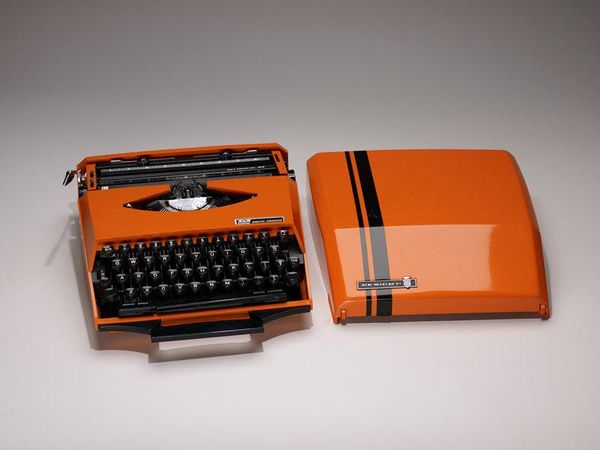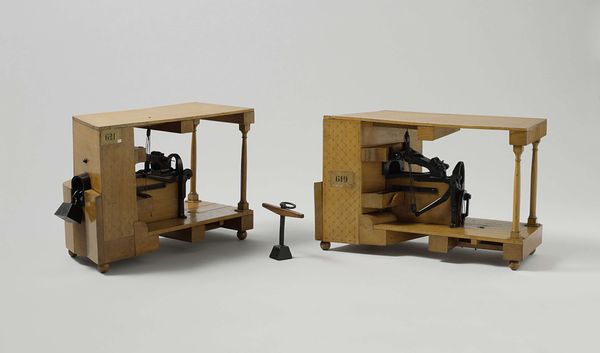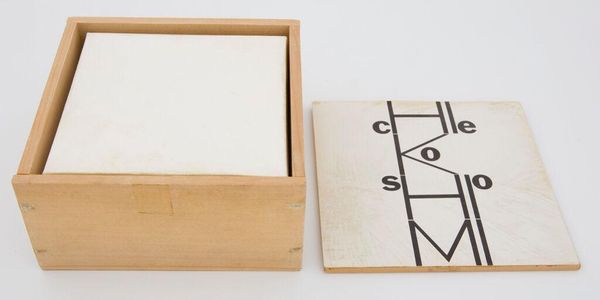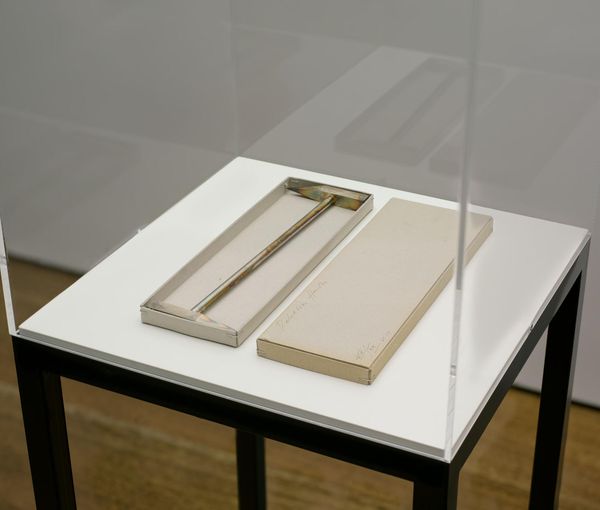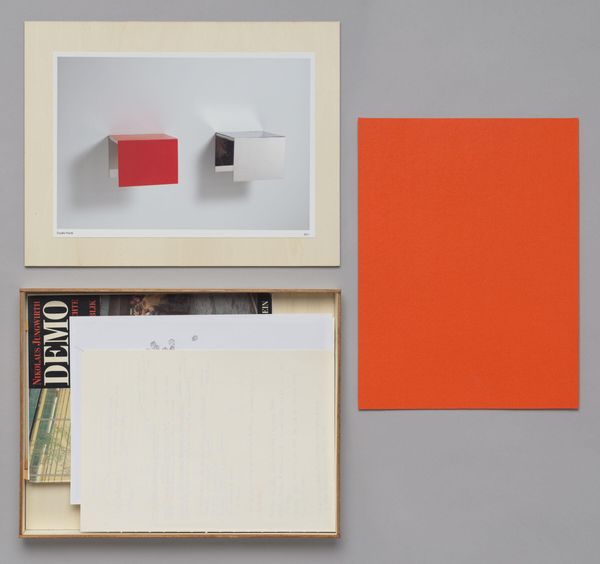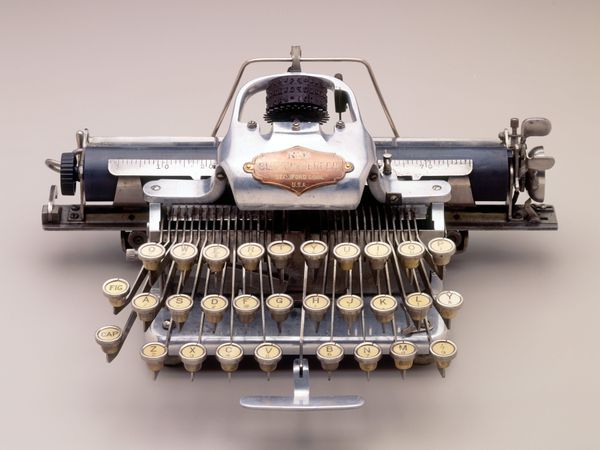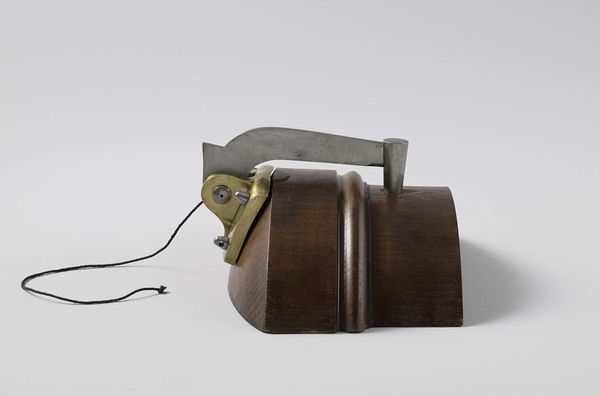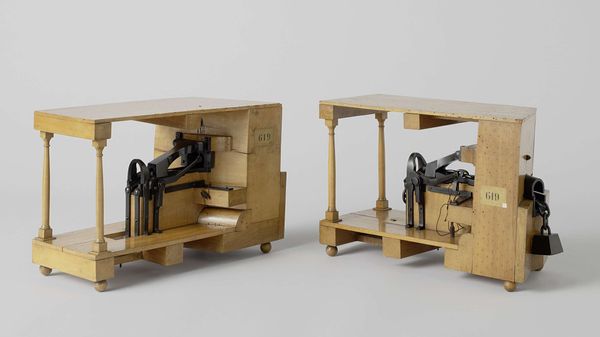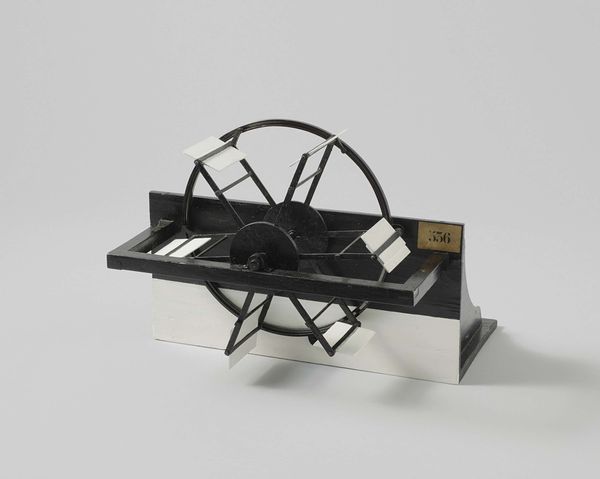
Copyright: Danh Vō,Fair Use
Curator: This installation by Danh Vō, dating from 2011, is titled "July, IV, Mdcclxxvi, 201, Typewriter of Ted Kaczynski." It incorporates a photograph, a typewriter, and what appears to be a copper sheet as a base. What are your initial thoughts? Editor: The gleaming copper platform beneath it all is just astonishing, frankly – almost vulgar in its preciousness. A jarring contrast against the antiquated, dark machine poised above. The sheer weight of those stacked sheets also hints to something… Curator: I agree. The juxtaposition is definitely intentional. Think about the typewriter itself – a mundane object imbued with heavy significance. We culturally associate that specific make with the Unabomber, whose image haunts the history of contemporary America. Vō is appropriating that history, those pre-digital origins of deadly ideology. Editor: The means of production and reproduction. Before computers, every screed, every threat, came off of a machine like this, mass-producible yet distinct through that instrument’s material limits. Now, as a readymade object recontextualized, the object screams materiality. Copper, so easily shaped and reworked—a luxury item here that’s the ground for all this ideology, really making me think about circulation. Curator: Absolutely. And Vō doesn't stop there. The copper, besides its inherent metallic associations and luxury commodity status, serves as a surface that reflects, right? Almost a mirror held up to a dark chapter of our history. It brings in issues of culpability, cultural complicity… Editor: Like a dark mirror, showing the viewer their own distorted reflection of those acts in a contemporary setting? What really sticks with me, also, is that stark contrast between the copper sheets themselves and the yellowed, aging photo tucked to one side; new money meets decay. Curator: Indeed, the aging image is the perfect complement to that juxtaposition. There is so much symbolic weight within it all… What the mind can type, what hands can make... it forces the viewer to dwell upon cultural narratives and the means of the stories being both told, sold and recorded throughout history. Editor: Agreed. For me, it's less about interpretation than awareness of the labor embedded, especially with the contrast of something seemingly slick like the copper. Thinking through what objects say beyond immediate function, beyond easy recognition... Curator: A final sobering meditation of objects of use that now haunt our collective consciousness with their material power. Editor: Material turned mental burden...
Comments
No comments
Be the first to comment and join the conversation on the ultimate creative platform.

